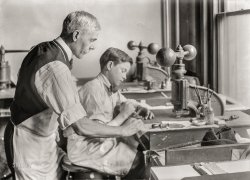
MAY CONTAIN NUTS

Search Shorpy
SHORPY ART

Framed or unframed, desk size to sofa size, printed by us in Arizona and Alabama since 2007. Explore now.
Join and Share
Ad-Free Shorpy
Shorpy is funded by you. Patreon contributors get an ad-free experience.
Learn more.

Recent comments
- Tobacco cam
- Basic fact I learned only later in life
- Put a Lid on it!
- Pinstripes in the Tower
- Sound enhancement
- 3438 in '38
- Second Career
- Their days are numbered
- Only the Sensor
- Train control mechanism
- Rarest of the Rare?? & Classy 3400 Class
- Control Mechanism
- Those standpipes
- Wrenches
- International D-40 I believe
- Job prospects
- You had me at Train
- Land of the free
- Broad-Exchange Bldg
- Parking innovation
- The old block
- "Peck turned a sweet propeller"
- National Bank Building
- Notch shot
- Straight ahead (right, left, left, right)
- Ship lifespans
- New service
- You Say Station, I Say Potato ...
- Iron Age
- Thank you, Cornelius Vanderbilt
Member Photos
The Shorpy
Printporium
Printporium
Search Shorpy
Search results -- 30 results per page
- Dog-On Taxi: 1924
- ... Turk, he was still at that address in 1924.
Al died in 1937.
Details Note the pipe and missing digits.
Sign of the times ... Posted by Dave - 12/09/2014 - 8:21pm -
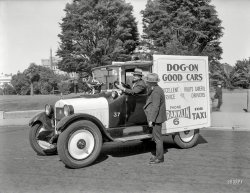
- Knock, Knock: 1939
- ...
Benevolent Aid and Burial Society An ad from the 1937 souvenir program for the 50th anniversary of Mound Bayou's founding. ... Posted by Dave - 06/11/2018 - 7:06pm -
![Knock, Knock: 1939 January 1939. "Businesses in Mound Bayou, Mississippi." Medium format negative by Russell Lee for the Farm Security Administration. View full size.
One Step ConvenienceIf one takes a final step off the unprotected balcony at right, one doesn't have far to go for their final journey.
Always an adventureI looked at this photo and wondered if Mound Bayou still existed (it does). I also discovered it has a history:
http://julieguardado.com/blog/2016/10/10/america-part-2-mound-bayou-miss...
It is always an adventure with the folks at Shorpy. Thanks.
Who's There? Cluck.Cluck Who?
Cluck-A-Doodle-Doo
Dare I say it?Business seems a bit dead for the business next door.
I have to askUpholding the tradition about the big old hotels on Shorpy;
When did this place burn down?
Now we knowSo that's why the chicken crossed the road: to get a Coke at Smith & Smith's.
Always entertainingI love the creative abbreviations you find in this era on signs and in newspaper headlines. They had it down to a science.
Make Me a SaladChickens should avoid any building with an axe display in the window.
Benevolent Aid and Burial SocietyAn ad from the 1937 souvenir program for the 50th anniversary of Mound Bayou's founding. No explanation for the name change.
[This is a different burial association in another town -- Glendora is two counties west of Mound Bayou. - Dave]
(The Gallery, Russell Lee, Small Towns, Stores & Markets)](https://www.shorpy.com/files/images/SHORPY-8b37122a.thumbnail.jpg)
- Who Wants Serum?
- ... articles in scientific journals, like this one from 1937 and this one from 1951.
In 1930 a New York Times article mentions ... Posted by Dave - 09/09/2011 - 6:22pm -
![Who Wants Serum? July 8, 1926. Washington, D.C. "Miss Hattie E. Alexander & Mrs. S.A. Carlin testing serum." View full size. National Photo Company Collection. [Update: A few years after this photo was taken, Hattie (on the left) would become Dr. Alexander. As president of the American Pediatric Society in the 1960s, she was among the first women to head a major medical association.]
Hattie AlexanderThis is Joe Manning. I think I found some amazing information about Hattie, the woman on the left.
Dr. AlexanderThanks again Joe for more information on this unsung trail blazer. Wonder if Mrs. Carlin was a hero's hero? Shorpy's good enough for the eye candy alone, but when you learn something too, all the better.
Hattie Alexander, 1901-1968Thanks to Joe Manning for the lead on Hattie. From her New York Times obituary of June 25, 1968:
Dr. Hattie Alexander, 67, Dies;
Columbia Research Pediatrician
Dr. Hattie E. Alexander, a pediatrician who won international recognition for her research at Columbia-Presbyterian Medical Center, died at its Harkness Pavilion yesterday of cancer. Her age was 67 and she lived at 4 Richards Road, Port Washington, L.I.
Years ago, Dr. Alexander developed a rabbit antiserum that was the first effective treatment of meningitis caused by Haemophilus influenzae, a disease that had been fatal for children. Throughout her career she was a leading authority on the treatment of bacterial meningitis. Upon her election as president of the American Pediatric Society in 1964, she was one of the few women to head a major medical society.
Dr. A.Thanks for the link. It's amazing to see her at both the start and toward the end of an illustrious career. And she never made professor until age 57!
A remarkable person.
Shorpy en FrancaisJ'ai tellement aimé vos photos anciennes des enfants travaillant à la mine aux USA, que j'ai réalisé un diaporama sur Dailymotion, sur lequel je n'ai pas manqué d'indiquer la source : © shorpy.com
Merci encore !
Shorpy HigginbothamUploaded by daniela-lucie
[Shorpy, like Jerry Lewis, is evidently big in France! - Dave]
Hattie E. Alexander
Isn't it interesting? Many of the comments on this site about photos of women, especially young women, refer to the hairstyle, clothes, teeth, and other physical characteristics. But few observers make references to what the women are doing in the photos, or what they might become. Take Hattie, for instance. Many of us will assume that she was just a young woman working in a laboratory, with no thought to how important her work might be, or how much she might accomplish in her work, due to the fact that she was a woman, not a man. So then I Google her, and guess what I find out? She later became one of the 20th century's most important researchers in the field of medicine. Even in this day and age, too little attention is paid to the accomplishments of women. We are still vulnerable to the assumption that it's the men who do the important things. I know that's a dangerous generalization to make, but this is yet another example of that kind of thinking. Hooray for Hattie! What a great role model for girls and young women. -- Joe Manning
Wonderful storyWhat a great story to go with a stunning photo. Thanks to Joe Manning and Dave for providing the extra information. Absolutely fascinating!
Sadie CarlinI've been trying to find some information about the other woman in the photo. With a bit of googling I've discovered she was Sadie A. Carlin. She published some articles in scientific journals, like this one from 1937 and this one from 1951.
In 1930 a New York Times article mentions she contracted psittacosis or parrot fever while doing tests for the Public Health Service.
And here, there's a photo of her in later life.
(The Gallery, Animals, D.C., Natl Photo)](https://www.shorpy.com/files/images/16044u.thumbnail.jpg)
- Teamwork: 1939
- ... light of day on April 1. This same thing happened in July 1937 when Mrs. Robie gave birth to a girl and a few hours later Mrs. Moon's ... up close and personal. Coincidence might have happened in 1937 but again 2 years later is a stretch.
Lynch pins Thankfully, their ... Posted by Dave - 07/21/2013 - 7:22am -
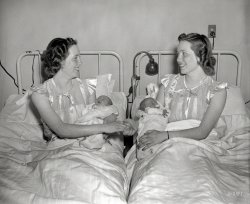
- Men of Steel: 1938
- ... entering the city limits.
On the night of May 12, 1937, 25,000 workers went on strike at Jones and Laughlin. It turned out to be ... 36 hours J&L capitulated and agreed to a union. The 1937 strike was the benchmark by which the United Steelworkers of America would ... Posted by Dave - 09/09/2011 - 12:06pm -
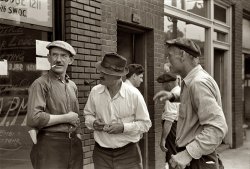
- Park-Vista: 1941
- ...
Shorpy Vehicle Identification Imperative 1937 Chevrolet two-door sedan and an ultra cool 1937 LaSalle four-door sedan with a custom "Landau" top. Parked in front of ... Posted by Dave - 09/25/2018 - 11:55am -
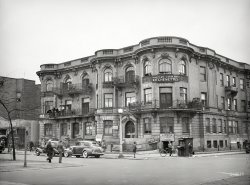
- Alice's Restaurant: 1939
- ... of that infamous Russian mystic.
Hoot Gibson -- in 1937 this cowboy, rodeo performer, and movie actor performed with the circus. ... Posted by Dave - 04/21/2019 - 2:40pm -
![Alice's Restaurant: 1939 September 1939. "Street on Saturday afternoon in Belzoni, Mississippi Delta." Medium format negative by Marion Post Wolcott. View full size.
Well Known Wallace Shows EntertainersWell known now but not so much then.
Clyde Beatty -- famous animal trainer.
Joe Skelton, the father of Red Skelton, once worked as a clown in the Hagenbeck-Wallace Circus. Red himself performed with the same circus as a teenager before entering vaudeville.
Emmett Kelly got his start as "Weary Willie" during the Great Depression with Hagenbeck-Wallace.
Maria Rasputin, daughter of that infamous Russian mystic.
Hoot Gibson -- in 1937 this cowboy, rodeo performer, and movie actor performed with the circus.
A little Hagenbeck-Wallace Circus History
Sideway signsWhat's missing in this modern day and age are the old style signs that protrude above the sidewalks.
From the 1939 pic just by a glance I would know what businesses lay ahead and from the google street view supplied by arch fan (thank you), with the almost every establishment and business displaying their brand, but today you see none of this.
Unless you lived in that area you would have no idea what lies ahead as you're going down that road.
I now have a real appreciation of how branding and signage was done back then.
Goldberg's of BelzoniThe fate of Alice's Cafe is unknown, but there is still a "Goldberg's" in this location (North Hayden Street) in Belzoni. It is no longer a grocery store (once known as "The Home of Good Things to Eat"), but is a department store. Opened by Joe Goldberg in 1916, it recently celebrated its centennial.
DecolessThis seems to be it. On the left, the front of Alice's seems to have been rebuilt, but Goldberg's is still there. On the right, Ken's Discount Furniture still has the ball-on-top-of-block at the corner of the building. The fruit market's windows have been bricked up, but there's still a gas station on the far right.
Alas, all of the cool deco/neon signage is gone.
EnduringConcrete pavement proves its superiority as witnessed in the street view of its present condition. Kudos to the city officials who originally made that choice.
I Have To AskJust what are those bags for? Is it to weigh down the front when there is a huge stash in the trunk? What? Can anyone tell me?
[They keep your cotton from spilling all over the road. - Dave]
[Thanks mate! I knew you would know - Baxado]
Coca-ColaI was going to comment that Alice's Cafe not having a Coke sign violates Shorpy's longstanding policy of including a Coke sign on every venue. But then I looked across the street where the Coke signs clearly met or exceeded standards. Whew.
It took me a whileto figure out that IMP.CO on the truck in the intersection stands for Implement - as in farm equipment. I didn't even google it.
(The Gallery, Eateries & Bars, M.P. Wolcott, Small Towns)](https://www.shorpy.com/files/images/SHORPY-8c11153a.thumbnail.jpg)
- No Swearing Gambling Drinking
- January 1937. "Children of citrus workers in hallway of apartment house. Winter Haven, ... Posted by Dave - 07/22/2014 - 7:43pm -
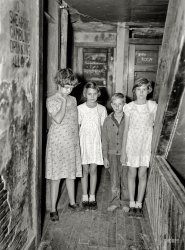
- Ruffles & Flourishes: 1900
- ... 23, 1953, was married to one Frederick W. Parker (1868 - 1937), who was a dentist, on November 2, 1892 in the District of Columbia. ... Posted by Dave - 08/15/2017 - 10:35pm -
![Ruffles & Flourishes: 1900 "Parker, Mrs. F.W. -- between February 1894 and February 1901." The wife of one Dr. F.W. Parker. 5x7 inch dry plate glass negative from the C.M. Bell portrait studio in Washington, D.C. View full size.
Hats create distance I submit that part of the reason this woman seems more accessible, aside from her beauty, is the absence of a hat.
GAL-lery WorthyThe lovely image is fit for Shorpy's "Pretty Girls" gallery but this woman has such a fascinating quality that might require a new section called "Unconventionally Pretty Girls." In any case, I'd call her the original cool girl.
WowI'm in love
Pretty great-grandma!I'd give a lot to have pictures of that kind of quality of my great-grandmothers, who would have been near this lady's age! One of them hadn't yet come here from Russia, two didn't have the kind of money for top of the line photography like this. The fourth, we do have a photograph of this quality of, taken about 15 years later, along with her parents and grown siblings. It's one of my most prized possessions!
The Eyes have itWhat an incredible lovely woman. Those eyes are mesmerizing.
Those eyesI'm dying to know what color they are.
"You don't know me but you make me so happy"Mrs. Jennie C. [Hamlin] Parker, April 20, 1871 - February 23, 1953, was married to one Frederick W. Parker (1868 - 1937), who was a dentist, on November 2, 1892 in the District of Columbia. They had one daughter named Grace Marion Parker born circa June 24, 1895. Their home in 1910 is at 233 Pennsylvania Avenue SE, and her husband has his practice in their home. By 1916 she and her daughter were living at 30 Girard Street NW, but she is now divorced from Dr. Parker. She was supporting herself by taking in boarders and working as a picture artist.
By 1930 she and her daughter, now Mrs. Grace Curtis, and son-in-law, Richard, were living with her. She gave her occupation as "artist" for the 1930 U.S. Census. By 1940 both Jennie and Grace show that they are widowed in the U.S. Census. There is no occupation listed for Jennie, but she does have several boarders. Grace is now working as a secretary at the Navy Department. Their home in both 1930 and 1940 is at 1361 Taylor Street NW.
Grace later remarries to a man whose last name was Smith, and she dies on October 30, 1977. Both Jennie and Grace are buried in Cedar Hill Cemetery in Suitland, Maryland.
(Comment title from "867-5309/Jenny" by Tommy Tutone)
Retouching?She's a lovely woman. There is a mottling (or maybe freckles?) on her face that my eye can't pick out in other portions of the image - would this have been the hand of a retoucher at work, or an artifact of the preservation of the photograph, or perhaps an effect of the wavelength sensitivity of the photographic emulsion (for the last I'm thinking of the strange skin effects seen with tintypes)?
[Customary Bell Studio retouching. -tterrace]
(The Gallery, Bell Studio, D.C., Portraits)](https://www.shorpy.com/files/images/SHORPY-06403a.thumbnail.jpg)
- Go Right: 1940
- ... to offer "initial" vanity license plates starting in 1937. No other state would do this until the late 50's, now they are ... Posted by Dave - 01/11/2019 - 4:34pm -
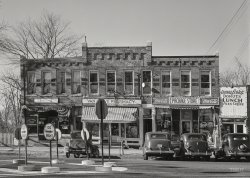
- Man of Letter: 1904
- ... became vice president in 1926, executive vice president in 1937 and president in 1940. He served as president and chairman of the board ... Posted by Dave - 01/23/2020 - 9:31am -
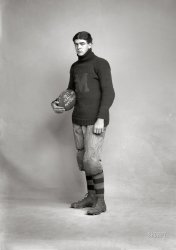
- Lenny and Edna: 1924
- ... reported missing) in 1936. They resurfaced, but in late 1937 the Japanese invaded Shanxi (and the Wilburs were again reported missing ... Posted by Dave - 08/13/2012 - 6:08pm -
![Lenny and Edna: 1924 June 3, 1924. "Leonard and Edna Wilbur," children of Navy Secretary Curtis Wilbur. National Photo Company Collection glass negative. View full size.
Edna & OnaFrom the Lima (Ohio) News, April 9, 1928:
Rescued by forest rangers from a narrow ledge 2,000 feet high, where darkness had trapped her and her girl companion during a trip thru Yosemite valley, Miss Edna May Wilbur, daughter of Secretary of the Navy Curtis D. Wilbur, was home here none the worse for her thrilling experience. Miss Wilbur went to the park with a party of friends. She and Miss Ona E. Ring attempted late Saturday to descend the snow-covered trail from Glacier point to the floor of the valley. Caught by darkness, they lost the trail and presently found themselves on the narrow ledge, whence they feared to attempt further progress. With a biting mountain wind tugging at their clothing, the girls huddled against the face of the cliff and called for help. Tourists in the valley, 2,000 feet below, heard their cries, and notified the forest rangers. Five men reached the girls shortly before midnight, and strenuous efforts succeeded in hauling them up to the trail with ropes.
[Thrilling! I think this was an episode of "Leave It to Beaver." - Dave]
Tats or Vacs?Those circular things on her arms. Can I assume that they were vaccination scars? She certainly has a modern attitude or so it seems.
[That's mold on the emulsion. - Dave]
Yes, DaveYes, the episode wherein the Beav climbs into a teacup and can't climb out and is rescued by the fire department. Amazing how daring Miss Wilbur was - that explains the dress.
[Not quite. I was thinking of the episode where Beaver and Gilbert go camping, get stuck on a ledge and are rescued by park rangers. - Dave]
Still waters run deepMiss Edna has a certain sly gleam in her eye. I'll bet she danced a few Charlestons in her time while Dad was off minding the boats.
Edna Does D.C.Atlanta Constitution, 11 July 1924
New Cabinet Daughter
Lands in Capital
And Looks it Over
Washington's newest cabinet daughter has been spending her first few days in the capital just like anybody's daughter here on an excursion trip -sightseeing.
Miss Edna Wilbur, whose father is secretary of the navy, arrived last Thursday from California. She came through the Panama canal with her brother, Leonard Wilbur, and then up the Chesapeake bay and the Potomac, from Hampton Roads, on the neat little yacht Sylph, which is at her father's disposal as boss of the navy.
...
Miss Wilbur is Washington's third cabinet daughter of marriageable or debutante age. Both the other two aren't braving hot weather here.
...
Miss Wilbur has another cabinet distinction besides braving Washington heat. She's the only daughter of a cabinet member who knows how it feels to spend money earned by herself.
The daughter of the navy secretary is a California high school teacher and she didn't give up her job just because her father is a member of President Coolidge's cabinet ...
Miss Wilbur is a tall girl, with much pale yellow hair and a fair skin. Not pretty, but attractive looking. And not the debutante or flapper type.
She is quiet and self-possessed. She has the voice and manner of a successful teacher.
And --no, her hair is not bobbed!
A Boston Globe article from April 13, 1924 says Edna graduated from Stanford with a degree in French. She was teaching at Chico High School.
Leonard or Lyman, perhaps Paul?I've been doing some research on Curtis Wilbur and all the sites list his children as Edna, Paul and Lyman. Perhaps Leonard was a nickname or is this a typo?
[Leonard Wilbur's name makes dozens of appearances in the historical archives of various newspapers. See the next comment up. - Dave]
Dr. Leonard Wilbur's mission Young Leonard would lead an inspiring, but all too short, life. After graduating from medical school at Stanford (where his uncle had been a president) he and his wife embarked upon a mission to Northern China, starting a hospital in the province now known as Shanxi. First the communist insurgents invaded (and the Wilburs were reported missing) in 1936. They resurfaced, but in late 1937 the Japanese invaded Shanxi (and the Wilburs were again reported missing but resurfaced). On Easter in 1940, during the Japanese occupation, Leonard died of typhus. He was only 33. His wife survived, and became one of the heirs to father-in-law Curtis Wilbur's inheritence when he died in 1954.
Sorry, Miss Edna.I guess you weren't the flapper I took you to be. The sly gleam must have been that look you gave your students to let them know you meant business.
Wilbur childrenCurtis D Wilbur had 5 children...
1. Ralph 3/18/1903 - 3/24/1906 age ~3
2. Leonard 3/2/1907 - 3/24/1940 age 33.
3. Edna was 25 in this photo, and Leonard 17.
From Pathways: A Story of Trails and Men (1968) by John W. Bingaman--
The Ledge Trail: "In 1871, James M. Hutchings had been guiding parties of hikers to Glacier Point over a most hazardous trail, which he had blazed up the Ledge and through the chimney and which climbed 3,200 feet in approximately one and a half miles to Glacier Point. This was the Ledge Trail.
In 1918, it was repaired by the Park Service. It was a dangerous climb because it was partly built of solid rock, and extremely steep, much like a staircase. Rock slides occurred frequently causing accidents to climbers. Only up-travel was permitted by the park regulations in later years. After several major floods, rock slides, injuries, and deaths to climbers the park authorities deemed it necessary to close this trail to all hikers. The Author assisted in rescue parties several times on this trail."
Edna hiked the Sierra's of California until she was 90.
4 & 5. Paul and Lyman lived until they were 100.
(The Gallery, D.C., Natl Photo)](https://www.shorpy.com/files/images/11692u.thumbnail.jpg)
- 1,568 Questions
- April 27, 1937. "Capitol's busiest policeman. Besides being an arm of the law, a Capitol ... Posted by Dave - 08/28/2012 - 3:11pm -
![1,568 Questions April 27, 1937. "Capitol's busiest policeman. Besides being an arm of the law, a Capitol policeman has to also act as an information bureau. Frank Foley, officer on duty at the entrance of the Senate office building from 8 to 4, kept a record today of the number of questions asked him. At the end of his day's hitch the total showed 1,568 questions asked, and answered correctly and with a smile, if we must believe Mr. Foley. Miss Mildred Aitken of Brooklyn, N.Y., is the pretty sightseer in this picture, receiving directions from officer Foley." View full size.
Scene: Across from the potato display.Cop: Hey! Lookit dem two dames havin' a donnybrook over a couple a p'tatoes!
Woman: Goodness gracious! Shouldn't you do something, officer?
Cop: Nah! Dey'll wear each udder out an' head back ta Portland sooner er later.
To the Batmobile!Quick, Robin - Chief O'Hara and Catwoman are in unholy alliance!
ContrastWhat a perfect shot to show how things had changed in only 30 years! Amazing. Imagine poor Officer Foley confronted with about 12 or 20 visitors at one time. It was truly a more innocent time on so many levels!
The best in town!Look how enthusiastic that police officer is in answering that lady's question. And I bet you she asked the officer something for which he was well familiar.
"Where can I find the best donuts in town, officer?"
Among the answers"That one there, the one with the funny shoes; that's a libertarian"
The No. 1 questionI work part-time at a library. The number one question we are asked every day is "Where's the restroom?" I wonder how many times Officer Foley heard that one as well.
[You could also say that's the No. 2 question. - Dave]
1568In eight hours with no lunch or bathroom breaks, Officer Foley was answering (and logging) better than three questions every minute of the shift. Pretty impressive.
Patrol... which is exactly why my husband decided NOT to become an NSA or Supreme Court officer, and instead works as a county deputy. Not that those jobs don't get interesting occasionally, but he got depressed just watching the check-in and question-answering duty, so he decided he didn't want to go that route.
(The Gallery, D.C., Harris + Ewing)](https://www.shorpy.com/files/images/22629a.thumbnail.jpg)
- Lard of the Flies: 1938
- ... were relatively new. (I used to think they were built in 1937, but they may have been new in 1938.)
Jane Adams, a professor at ... Posted by Dave - 04/16/2018 - 11:15am -
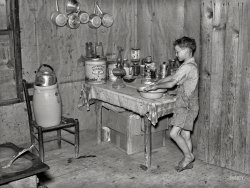
- Expert Lubrication: 1939
- ... soda sign is below.
The Chevrolet pickup truck is a 1937 model and cost $515. This was the first year for the all steel cab (no ... Posted by Dave - 11/17/2017 - 11:36am -
![Expert Lubrication: 1939 February 1939. "Service station in Harlingen, Texas." Medium format negative by Russell Lee for the Farm Security Administration. View full size.
Cans Along the BorderThis is the service station of Lonnie Wade Molder (1911-1993), the son of Abraham Molder and Pearl Adair. Lonnie graduated from Harlingen High School in 1928, and then Brownsville Junior College in 1930. He married Edna Faye Swisher in 1935, and they had four children. It appears that he owned this station based on Harlingen city directory entries from 1944 to 1948.
Of interest in the photo is the array of oil cans that are the border to the shrubs at both the left and right of the photo as well as the change in gas price, from 16 to 15 cents, as seen on the sign on the canopy above the pumps. All of the planters, including the ones attached to the windows, appear to be reutilized gas tanks. A clearer view of the "Won Up" soda sign is below.
The Chevrolet pickup truck is a 1937 model and cost $515. This was the first year for the all steel cab (no wood). Based on the license plate, I believe this photo is actually from 1938 (the 1939 - 1941 commercial plates had "Texas" at the top). The enlarged license plate is also below.
Molder continued to own and operate the station into at least 1948. By 1950 he was a partner in North Side Welding & Repair down the street at 622 Commerce. By 1956 he had become the assistant manager for the service station at Harlingen Air Force Base (now Valley International Airport). He eventually went back to welding, and he was employed with Gulf Welding Supply in Harlingen for many years.
It appears that he retired in 1975. He and his wife then moved to LaFeria, Texas, in 1979, and by 1992 they were living in Ingram. He died the next year, Edna in 2006. From her obituary we learn that they met while she was still in grade school at South Ward School (now Bowie Elementary). Since he was seven years older, they would not have attended school together for any long period of time.
Molder's obituary mentions his involvement in the Masonic Lodge of both Harlingen and LaFeria. He served as the secretary for the Harlingen lodge for 35 years, he was a 32nd Degree Mason, and he received their Golden Trowel award in 1991.
Try that todayTexaco and Shell pumps at the same station!
Competing Brands?This is the first gas station I've ever seen with pumps for at least two different brands of gas, and the third pump seems to be unmarked. Was this common before WWII?
[For more buffet-style gas, click the links below. - Dave]
https://www.shorpy.com/node/4287
https://www.shorpy.com/node/20712
Flowers by FordI believe that the planter on the ground at center is made from a Model T gas tank.
Who dropped the ball?Unless my vision is failing me, this is one of the first pictures of a service station, convenience store or street scene that does not have an advertising sign for Coca-Cola, although I do see that the 7 Up rep and some other unknown beverage did get advertising signs as did the telephone company that is also a fixture in most old Shorpy photos of this nature.
[No Coke. Pepsi! - Dave]
An original "pumping gas story"During WWII, my uncle in Vinita, Oklahoma, owned a wholesale gasoline business. He had a 750-gallon tanker truck and would deliver to nearby country gas stations and to farms that had their own small storage tanks. My cousin and I, both 10 years old, would ride along to add interest to our lazy summer. In those days, there were two grades of gas, Ethyl and Regular. At one stop, he made the error of filling the Ethyl underground tank with Regular. In a hurry, he left the two of us to hand pump the Regular into the glass bowl and then drain it into the Regular tank. Ten gallons at a time. When he returned, both of us kids were really worn out. An aside: all gas was rationed. Civilians had 3 classes: A, B, and C. I think for 4, 8, and 12 gallons per week. Then there were commercial and farming classes based on need.
(The Gallery, Cars, Trucks, Buses, Gas Stations, Russell Lee)](https://www.shorpy.com/files/images/SHORPY-8b37234a.thumbnail.jpg)
- Urban Infrastructure: 1941
- ... President's Conference Committee or “PCC car” built in 1937 by the St. Louis Car Company. It was one of Capital Transit's initial ... Posted by Dave - 09/23/2017 - 10:29am -
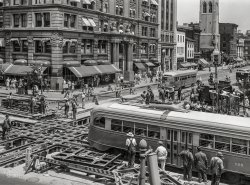
- Gasoline Alley: 1935
- ... the photos are from 1935, they precede the great flood of 1937 in Cincy which caused great damage throughout the city. After the waters ... Posted by Dave - 07/16/2016 - 6:34pm -
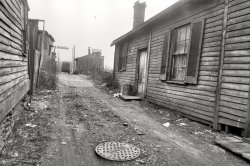
- Family Room: 1941
- ... A nice Kadette radio in this picture. Model K-10 from 1937. Attached photo from Lynn Toppo and Radioattic. ... Posted by Dave - 05/19/2019 - 12:38pm -
![Family Room: 1941 May 1941. San Diego. "Family living at Kearney Mesa defense housing project. This man came out to California from Oklahoma 10 years ago. He has been an agricultural worker and had lived in various FSA camps. Now employed as a painter at Consolidated Aircraft." Medium format negative by Russell Lee for the Farm Security Administration. View full size.
Kadette K-10A nice Kadette radio in this picture. Model K-10 from 1937. Attached photo from Lynn Toppo and Radioattic. https://www.radiomuseum.org/r/intern_rc_k_101.html
Caught in the reflectionOur intrepid photographer seems to be shooting from the hip.
Role Playing Set PieceWhile the photographer futilely tries to hide from his reflection in the window, Mom and Dad have been placed in their traditional roles. Mom sits on the couch holding baby, while Dad sits to opposite side and pretends to be interested in newspaper contents.
Who was on strike?Oh no, Shorpy has done it to me again.
The newspaper headline screams about a labor union defying FDR against striking at a defense plant. I wondered: which plant, which union, and what happened?
Two clues: it is May 1941 and the plant is an aircraft facility in the LA area.
Off to Google where I found a US Department of Labor bulletin -- Number 711 dated 1942. This document listed all of the strikes from 1941.
Sure enough, there it was: the UAW (then part of the CIO) called a strike against the North American Aviation plant in Inglewood, CA on June 5th. By June 9th, FDR ordered the Army to take control of the plant and the workers returned the next day. A settlement on wages was achieved by July 1st. [page 25 of the bulletin]
The document also notes that all strikes were cancelled on 8 December.
See: https://www.bls.gov/wsp/1941_strikes.pdf
Relections and shadowsThere are two light sources evident in the photo, as best evidenced by the two shadows of the floor lamp. The shadow on the side wall is considerably off-axis from the camera angle, coming from a good distance to the right. That's the flash unit being held by the man reflected in the window. The other shadow, on the wall behind Dad, is from a light source on a very close axis to that of the camera, so close that it has to be from a flash unit mounted on the camera itself, the bulb and reflector a few inches higher than and very slightly to the left of the camera lens. Therefore, the guy in the window reflection is an assistant, not the photographer. Plus window guy would have to have third hand to click a camera shutter, since one is holding the flash and the other the white thing.
Russell LeeI can’t remember seeing a picture of him here before, even as a reflection. He was born in 1903 (and lived till 1986), so he’d be in his late thirties in this shot. I attach a photo of him from a year later, from 1942.
North American Aviation Strike - Los Angeles TimesU.S. Ready to Seize Plane Plant.
June 7, 1941: The strike at the North American Aviation plant, in which Army troops dispersed union activists and took over an essential American defense facility, is one of the landmark events in Los Angeles history.
(The Gallery, Kids, Russell Lee)](https://www.shorpy.com/files/images/SHORPY-8c35242a.thumbnail.jpg)
- Sal's Italian Groceries: 1936
- ... outside... Yeah, me, too! (Arrigoni's is still open, since 1937, but Traverso's is sadly gone from Santa Rosa.)
DO YOU WANT WAR? ... Posted by Dave - 02/07/2013 - 10:47am -
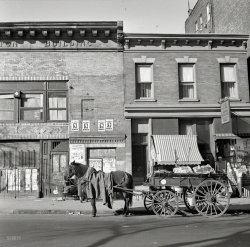
- Re-THINK: 1956
- ...
THINK, the musical From "Songs of the I.B.M." (1937 edition), the words to "Our President's Motto - 'THINK'" (sung to the tune ... Posted by Dave - 07/14/2013 - 11:12pm -
![Re-THINK: 1956 1956. "IBM Manufacturing and Administrative Center, Rochester, Minn. Eero Saarinen, architect." Another perspective on the desk seen here, now with a view of the parking lot. Kodachrome by Balthazar Korab. View full size.
Cigarettes help you thinkYou can see this wasn't taken while the programmers were there. You can see across the room. Back in these days all the programmers smoked like chimneys. You could spot their work area by the cloud of smoke over it.
American Iron outside...Yesterday I saw an all black, perfect condition 57 Chevy with continental kit and RED interior driving South on Highway 101. Could've pulled right out of this lot, given the one year time slip.
I love the lighting, it's like late in the day and most have gone home. Or is it early, and the view the first person in the department gets when they walk in?
It still blows my mind that they needed an architect to build this rectangular room devoid of any personality at all! Is there a defined style called Cookie-Cutter architecture?
Where's my Taurus?Very disconcerting to my mind to see "antiques" out the windows and "modern" furniture inside the windows.
This furniture, and cubicles in the previous pic, are almost identical to much of the furniture at US Steel Gary Works where I toiled in an office much like this one through 1999.
When I look out the window at IBM, I can't help but expect to see 1990's autos! Very cool picture for that reason.
The DeskI don't think it's the exact same desk. The room is completely different. My guess is it's just one of many identical desks and placards that IBM probably bought for that facility.
[Same desk, unless IBM had strict accouterment placement standards. -tterrace]
And not onedrab silver/grey car among those Easter egg colors!
FHS '89Change the cars and remove the ashtrays and that looks like a room in my high school in the '80s!
Deja vuBut for a brief moment just looking at this photo took my mind back in time and there I was sitting on one of those chairs similar to the ones used in our high school cafeteria. And I was gazing through the window, much like the one pictured, at the student parking lot across the street from the cafeteria. Students back in the 60's generally drove cars that were at least 10 years old and it was those cars shown in the photo that took up occupancy in that student parking lot so many years ago.
THINK, the musicalFrom "Songs of the I.B.M." (1937 edition), the words to "Our President's Motto - 'THINK'" (sung to the tune of "Yankee Doodle"):
(verse 1)
T-H-I-N-K spells THINK-
Our President's great motto.
Saves mistakes, lost time and ink.
You'll then do what you ought to.
(verse 2)
T-H-I-N-K spells THINK-
'Tis good for brain and body,
Dark blue visions change to pink.
And you'll please everybody.
(Chorus)
T-H-I-N-K spells THINK-
Thoughts are pure and golden;
Bigger thoughts and good ones too,
Then I.B.M. will broaden.
(Balthazar Korab, Cars, Trucks, Buses, The Office)](https://www.shorpy.com/files/images/SHORPY_00517u.thumbnail.jpg)
- H Street Market: 1920
- ... in Florida in 1926 and his son also died in Forida in 1937 while vacationing from the bread business. Both had heart disease. Charles ... Posted by Dave - 05/17/2014 - 10:23pm -
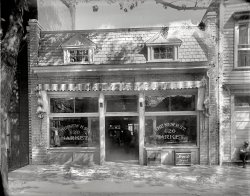
- Steel City: 1938
- ... Rosenbaum's. Corner of Liberty and Sixth, photo taken in 1937.
The car parking looks very scary. The car parking looks very ... Posted by Dave - 05/02/2020 - 4:26pm -
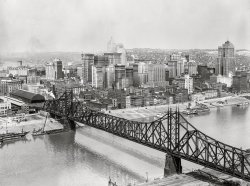
- Classical Gas: 1942
- ... Shell gas truck. It is a 1939 Hudson. My dad had a 1937 Terraplane version of the sedan in the photo. He enjoyed calling the ... Posted by Dave - 05/17/2019 - 5:54pm -
![Classical Gas: 1942 July 1942. Washington, D.C. "Cars and trucks on Independence Avenue S.W." Photo by John Ferrell for the Office of War Information. View full size.
AkimboThe arms on the sailor, way on the left.
Healthy treesToday's view shows scraggly, anemic looking trees. So much so it's not hard at all to see the Washington Monument.
[In the December 2016 view below, it's almost as if the trees are missing their leaves. Bizarre! - Dave]
It's more than just the leaves, Dave.
[Yes. They're a sickly green color. - Dave]
Stylin'The '30s and early '40s saw the gradual application of Deco and streamlined design themes to a wide assortment of machines, in this case the Shell tanker depicted.
What's the difference between a gasoline tanker and a Sunbeam toaster? In this instance, not a whole lot, aesthetically speaking.
Sentimental momentMy Dad worked for Shell for nearly 50 years. He kept a 1/32(?) scale model version of this tanker truck on his office credenza for as long as I can remember. Nice to see a photo of the real thing.
No where to goThere are no pockets in a Navy dress uniform, difficult to know what to do with your hands. Same with football uniforms.
Car IDsThe car closest to the sailor is a '39 Plymouth. The car on the right with radio antenna and Greyhound hood ornament is a '35 Ford. Car radios were expensive in the 1930s, $80 for a Packard radio. The low-priced 3 had MSRPs of about $700, so a radio sale made the dealers happy. Does anyone know what a heater cost in 1935 - 1940?
Shorpy Vehicle Identification ImperativeNo one has yet identified the humble 2dr sedan in front of that adorable Shell gas truck. It is a 1939 Hudson. My dad had a 1937 Terraplane version of the sedan in the photo. He enjoyed calling the Hudson a "Late Model Essex." Which, I guess, it was.
(The Gallery, Cars, Trucks, Buses, D.C., Gas Stations, John Ferrell)](https://www.shorpy.com/files/images/SHORPY-8b14486a.thumbnail.jpg)
- PAFA: 1900
- ... adhere to 21st-century museum standards, what happened in 1937 is perhaps slightly more jarring.
The Plinth
In 1876, PAFA opened ... was designed specifically to house the sculpture. By 1937, the ravages of industrial air pollution and cold winters had rendered ... Posted by Dave - 11/13/2018 - 4:21pm -
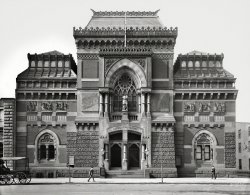
- The Roundup: 1940
- ... a population of over 10,000.
I'm guessing the car is a 1937 Nash.
Air cooled Clearly means, "We'll leave the door open on a ... Posted by Dave - 04/02/2019 - 7:21pm -
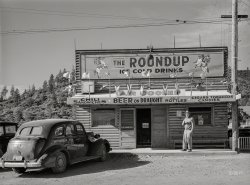
- Arthur Fields: 1920
- ... in the late twenties and performed with him on radio in 1937. Fields also recorded with Bailey's Lucky Seven, Sam Lanin and the ... Posted by Dave - 01/16/2008 - 6:30pm -
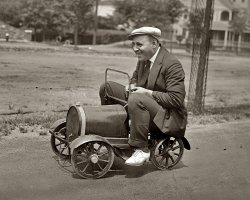
- Cockaday and Banning: 1924
- ... Television Why Not Facsimile published by "Radio News
1937: Was teaching at New York University, and authored 34 Lessons In Radio and ... Posted by Dave - 09/13/2012 - 4:20pm -
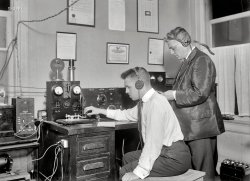
- Newark Luxe: 1944
- ... it every few years since.
Fast Company Written in 1937 by Harry Kurnitz (1908-1968), published under the name Marco Page, and ... Posted by Dave - 09/15/2014 - 6:01am -
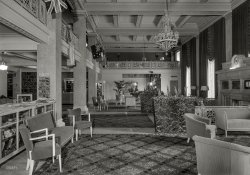
- Color Wheels: 1943
- ... View full size.
Popeye The truck is a circa 1937 International D300 COE.
No raises in 1943 ...due to price controls ... Posted by Dave - 08/16/2017 - 12:03pm -
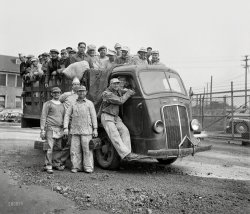
- The Apprentice: 1917
- ... Die Makers I wonder if Fred had a tool and die job in 1937. Assuming he had a job throughout the Depression, did it pay well? ... Posted by Dave - 04/15/2020 - 8:52pm -
